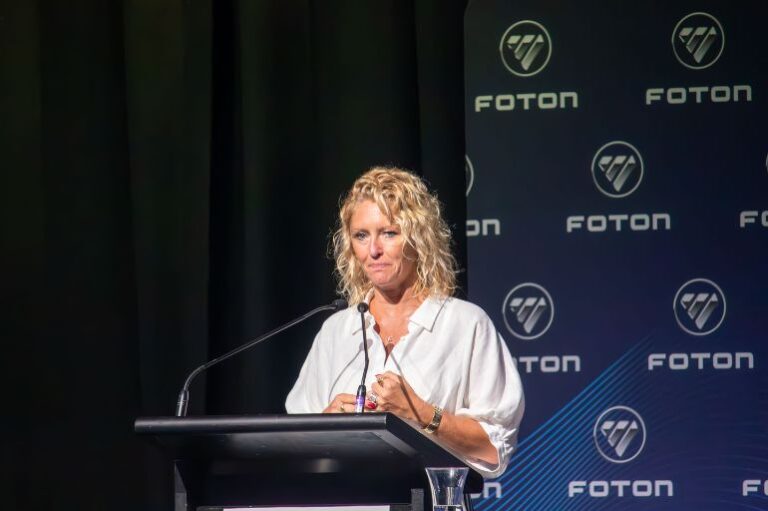“We’ve got about 6,000-7,000 in fleet. We’ve got two ships that go back and forth between the mainland and Tasmania. We have planes. I’ve got four new planes coming in. Lots of materials handling, and lots of emissions — about 236,000 tons.”
That was how Heather Bone, director ESG — environment, social and governance, at Australia-based freight and delivery business Team Global Express outlined the size of the task she is managing.
To be sure, her task is to help TGE meet its own publicised goals — a 30 percent emission reduction by 2030, a 75 percent commitment to renewable energy by 2025, and a vision to be the most sustainable transport and logistics provider.
Customers including Woolworths, Coles, IKEA, JB Hi-Fi are all demanding “we do something about it”, said Bone, addressing the 2024 Fleet Conference organised by the fleet chapter of the Institute of Public Works Engineering Australia.
“I think one of the biggest drivers that we’re going to see is the superannuation funds, the capital firms who are coming to us and saying, ‘We will only give you money if you are driving down your emissions’.”
Suffice to say the quest to reduce emissions is inevitable. So how is TGE doing it?
Bone talked about the unveiling in March of Australia’s largest logistics electric vehicle fleet trial. As part of the $44 million project, which is backed by the Australian Renewable Energy Agency, TGE has ordered 60 electric trucks — 36 Volvo eFLs, and 24 Daimler Fuso eCanters. Volvo said the order was the biggest it had ever had for the medium duty electric truck from anywhere in the world.
These trucks, most already delivered, will replace about one-third of the existing fleet based at TGE’s western Sydney depot of Bungarribee and will be used to deliver parcels all over metropolitan Sydney. The depot has charging infrastructure and a battery storage system that uses on-site solar energy.
Bone said TGE saved $7,300 in energy costs in the first hour after turning on the battery system.
Turning electric isn’t the only path to carbon neutral. Bone said another area they are trying to tackle is driving empty trucks around. “There’s a lot of efficiencies we can make in what we do.”
At some point she expects hydrogen fuel to play a bigger role too, particularly for heavier vehicles.
“I, frankly, don’t think it’s going to be this decade. I think it’s going to be 20 years and beyond before we really get there. And it needs to be liquid hydrogen, not gaseous hydrogen, which is what a lot of the operators are looking at doing at the moment.”
Meanwhile, back at the Bungarribee depot, not everything is going great. A truck ran out of power on its way back to the depot from a run to the Blue Mountains on a particularly hot day, another failed because of a battery solenoid problem.
“We’ve had two trucks that we’ve had to tow back. We knew it was going to happen. That’s why you’re doing a trial right? So that you can learn from these.”
Bone also noted a truck that returned to the depot with more energy than it had left with thanks to the regenerative braking.






